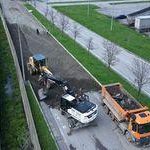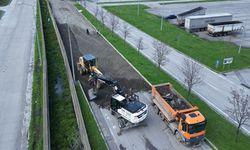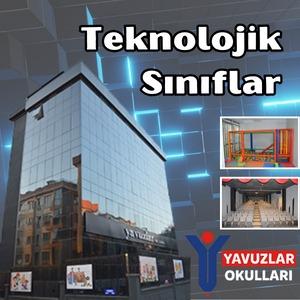In recent years, advancements have redefined long-haul transportation. This sector has seen rapid innovation, transforming old systems into new paradigms. Efficiency is now the name of the game. Modern solutions bring unprecedented changes.
With these developments, freight transport is more interconnected and smarter than ever. Imagine routes planned with precision and vehicles that communicate seamlessly. Drivers are better informed, leading to safer and more efficient travel. The implications are vast, touching every aspect of logistics.
Moreover, cutting-edge systems are making logistics not just smarter, but greener. Reduced emissions and fuel consumption are now achievable targets. The benefits extend beyond the bottom line. Environmental impact is minimized, contributing to global sustainability efforts.
It’s clear that innovation in this field is not just a fleeting trend. It represents a fundamental shift in how goods are moved. As new solutions continue to evolve, they promise to redefine the future of commercial transportation. This transformation holds promise for a more efficient, eco-friendly, and safer industry. Are we prepared to embrace these changes?
The Impact of Technology on Trucking
The integration of modern advancements has dramatically redefined the way freight moves across regions. Fleets are now more efficient, responsive, and safer than ever before. Companies are striving for better fuel management and route optimization. Logistics have embraced new systems to enhance productivity. Drivers, too, are experiencing tremendous changes in their daily routines.
- Enhanced Safety Measures:New safety protocols have been implemented, resulting in fewer accidents. Driver monitoring systems and automatic braking contribute to a safer environment on roads.
- Fuel Efficiency:Innovations focus on reducing fuel consumption. Governors limit speed, while route planning ensures minimal fuel waste. Moreover, electric vehicles are gradually entering the market, aiming to cut emissions significantly.
- Optimized Route Planning:Real-time data and predictive analytics are utilized to determine optimal routes. These routes not only save time but also reduce the likelihood of delays.
- Autonomous Freight Movement:Self-driving trucks are being tested and, in some cases, implemented. This shift could ultimately lead to reduced human error and enhanced productivity throughout the supply chain.
- Boosted Fleet Management:Advanced telematics systems allow for comprehensive tracking of every vehicle. Managers are equipped with tools to analyze performance, predict maintenance needs, and improve overall fleet operation.
Emerging advancements are transforming cargo transportation into a more streamlined and intelligent process. These developments are reshaping nearly every aspect of the logistics ecosystem. Emphasis on safety, efficiency, and automation is driving profound changes. Evolution within this sector is both exciting and inevitable, with benefits extending to drivers, businesses, and society at large. This dynamic shift promises a future where freight moves seamlessly, efficiently, and sustainably.
Enhanced Route Planning and Efficiency
The current advancements in route optimization are incredibly significant. They aren’t just about finding the quickest path. Instead, it’s about gaining a comprehensive approach to road logistics. More accurate maps, better traffic predictions, and real-time updates come into play. The aim is to save fuel, time, and ultimately money. It also makes sure that goods reach their destinations faster and safer.
The enhancements bring several notable benefits:
- Reduced fuel consumption: Optimized routes mean fewer miles traveled, which saves fuel.
- Time savings: Intelligent systems help avoid traffic jams and roadblocks, cutting delivery times.
- Increased safety: Accurate data can alert drivers to dangerous conditions and hazards.
- Lower operational costs: Fewer delays and efficient scheduling reduce overall costs.
For instance, real-time traffic updates play a crucial role. They provide immediate information about road conditions. Drivers can thus avoid congested areas. Not just them, fleet managers get a clear picture of all active routes. This helps in making rapid decisions. With instant rerouting capabilities, disruptions are minimized.
Consider predictive analytics. This is a game-changer. By analyzing past and current data, predicting future trends is possible. This includes traffic patterns, weather conditions, and even driver behavior. Such insights enable proactive decisions instead of reactive measures. So, deliveries become more reliable.
The use of GPS and sophisticated mapping tools is another aspect. They offer precise navigation. Navigational errors drop significantly. It ensures that deliveries happen as planned. Even in remote or unfamiliar areas, routes are easily managed.
Lastly, these innovations benefit more than just logistics companies. They also improve customer satisfaction. Goods arrive on time. Fulfillment of promised delivery times boosts customer trust and loyalty. In conclusion, enhanced route planning merges efficiency with reliability, paving the way for a smoother operational flow.
Route Optimization Algorithms

Logistics has undergone significant transformation through intelligent routing techniques. These methods streamline navigation for cargo vehicles, ensuring efficiency and reducing costs. Companies can now deliver goods faster and with greater precision. Algorithms play a pivotal role in this new landscape.
These advanced methods calculate best paths for delivery trucks. They take into account various factors such as traffic, road conditions, and delivery windows. The result is a meticulously calculated route that saves both fuel and time. Not only do they boost operational efficiency, but they also enhance customer satisfaction by ensuring timely deliveries.
- Traffic Analysis:Algorithms evaluate current and historical traffic data. They avoid congested areas, choosing faster roads.
- Weather Conditions:Real-time weather updates are factored in. Poor weather routes are sidestepped.
- Delivery Windows:They consider specific delivery times requested by customers. Late arrivals are minimized.
Furthermore, these sophisticated systems often integrate with GPS technology. They provide real-time updates and recalculations if sudden changes occur. Imagine being stuck in unexpected traffic; an immediate reroute suggestion can save hours. Beyond traffic and weather, they can interpret other variables like vehicle load and driver schedules to find the perfect route.
Adoption of these methods is widespread. It’s evident in how shippers operate daily. Organizations not utilizing them fall behind their competitors. The advantages are clear. Whether it’s a small business or a large fleet, embracing route algorithms is essential. Efficient routes mean fewer miles, less fuel consumption, and reduced carbon emissions.
Real-Time Traffic Updates
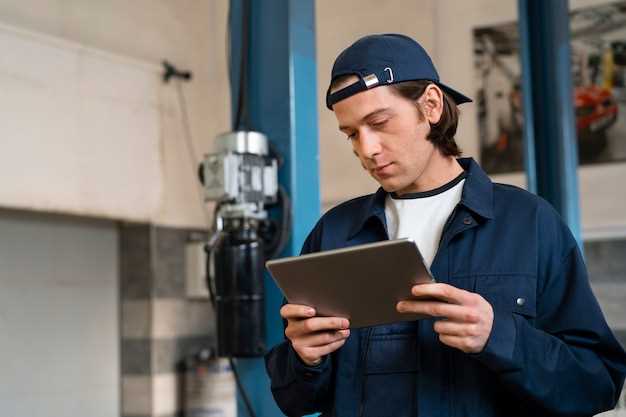
Staying informed about road conditions is crucial for any long-haul driver. Updates on current traffic can streamline routes and save valuable time. Real-time data helps avoid congested areas. Efficient travel means reduced fuel costs and quicker deliveries. It’s a significant edge over traditional methods.
Modern systems harness satellite and sensor networks. They monitor and report road statuses instantly. This intel lets drivers make immediate adjustments. Encounter a traffic jam? Find an alternative route without losing precious minutes. Imagine the savings on wear and tear!
Besides mere traffic, these updates cover accidents, road closures, and weather. They empower drivers to stay proactive, not just reactive. Especially in unpredictable weather, knowing road conditions up ahead is indispensable. Beyond just efficiency, it’s about safety too.
Fleet managers also benefit. They can track each vehicle’s progress in real-time. This visibility helps in planning and coordination of deliveries. Improved communication between dispatchers and drivers minimizes delays. Everyone stays on the same page, enhancing overall productivity.
Clients appreciate punctuality. Real-time alerts help meet tight schedules. Customers receive their goods on time, fostering trust. In a competitive market, every little advantage counts. Up-to-date road information is more than a convenience; it’s a strategic asset. It transforms how routes are planned and executed, ensuring smoother and more profitable operations.
Safety Improvements in Modern Trucks
Modern trucks are far safer than their predecessors. Innovations have led to significant enhancements that protect both the driver and other road users. These advancements have resulted in reduced accident rates and lessened the severity of collisions.
Several features contribute to these improvements:
- Advanced Driver Assistance Systems (ADAS)
- Enhanced braking mechanisms
- Improved stability controls
- Better visibility through upgraded cameras and sensors
- Integrated communication tools
Advanced Driver Assistance Systems (ADAS) offer numerous functionalities. They include lane-keeping assistance, adaptive cruise control, and automatic emergency braking. These features work together to support the driver. They help maintain safe distances and correct potential errors. Imagine a long haul on a challenging route; having such technologies ensures that the truck stays within lanes, adapts speed according to traffic, and stops if an obstacle is detected. This consolidation of duties significantly reduces driver fatigue and human error.
Braking systems have seen remarkable upgrades. Electronic stability control and automatic braking complement traditional mechanisms. These additions enable trucks to maintain control even in adverse conditions. High-speed scenarios demand reliable braking. New systems ensure quick response and shorter stopping distances. In emergencies, these braking enhancements are critical. They safeguard the driver, cargo, and surrounding vehicles.
Visibility is another crucial area of development. Modern trucks are equipped with high-definition cameras and advanced sensors. These tools provide real-time data. They offer comprehensive views of blind spots and difficult-to-see areas. Enhanced night vision adds another layer of safety. Drivers can make informed decisions, especially during low-light conditions. The reduction in blind spots directly leads to fewer accidents.
Integrated communication tools also play a pivotal role. Fleet management systems keep the driver connected. They facilitate instant updates on road conditions, weather, and detours. Clear communication ensures smooth operations. Emergency services can be contacted immediately if needed. This connected ecosystem forms a robust safety net around modern trucking.
Overall, these safety advancements have transformed contemporary trucking. The focus on driver assistance, braking efficiency, visibility, and communication has created a safer environment on roads. Such improvements continue to evolve, promising even greater future enhancements for all road users.
Advanced Driver Assistance Systems
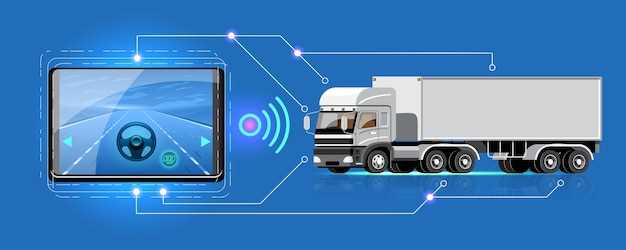
Modern driving support innovations are revolutionizing logistics and freight transportation. These enhancements boost safety, enhance efficiency, and simplify operations for drivers. Over time, more sophisticated features are being integrated into commercial vehicles. They don’t just assist; they transform drivers’ experiences on roads. The benefits are undeniable. They contribute to a safer and more reliable journey. But there’s more to it than just safety and convenience.
Some of the key components that are making a significant impact include:
- Adaptive Cruise Control:Adjusts speed automatically to maintain a safe distance from vehicles ahead.
- Lane Keeping Assist:Alerts drivers when the truck begins to drift out of its lane.
- Automatic Emergency Braking:Detects potential collisions and applies brakes independently.
- Blind Spot Monitoring:Warns drivers of vehicles or obstacles in their blind spots.
- Traffic Sign Recognition:Identifies road signs and displays related information to the driver.
These systems don’t just exist in isolation; they work together seamlessly. For instance, while adaptive cruise control manages speed, lane-keeping assists in keeping the vehicle centered. Integration ensures maximum efficiency. The combination of these features provides a safer driving environment. This can result in significant reductions in accidents and mishaps. Enhanced safety translates directly into fewer downtimes and lower repair costs.
Another critical advantage is reduced driver fatigue. Easier navigation through congested areas and on long hauls can make a positive difference. Drivers can focus better on their journey without constant stress. This holistic approach doesn’t just affect the driver; it influences the entire supply chain. From shippers to end customers, everyone reaps the benefits. Ultimately, driver assistance technologies contribute to smoother operations and happier, healthier drivers.
Collision Detection Technology
Innovative systems are rapidly redefining safety measures for commercial vehicles. Special kits designed to sense objects around them are now essential. These systems ensure that drivers can anticipate potential hazards. By addressing risks early, accidents can be minimized. Enhanced safety translates to fewer insurance claims and safer roads.
Collision detection systems incorporate various sensors. These include:
- Radar sensors
- Ultrasonic sensors
- Camera-based sensors
Each sensor has a specific role. Radar units evaluate the distance and speed of nearby objects. Ultrasonic models detect close obstacles when maneuvering. Cameras offer visual data to support navigation and awareness.
Challenges exist too. Factors such as severe weather conditions can affect sensor accuracy. Employing multiple sensor types helps to mitigate this risk. Integrating data from diverse sources ensures reliable real-time feedback. Hence, drivers make informed decisions, leading to safer driving practices.
- Data collection from sensors
- Real-time data processing
- Driver alerts and intervention
Adaptation to new systems requires proper training. Drivers must understand how these systems work. Familiarity enhances trust and optimizes use. Ensuring seamless interaction between drivers and detection modules is key.
Fuel Efficiency and Emissions Control
The world of commercial transportation is evolving rapidly, bringing new priorities. One major focus is improving mileage and reducing pollutants. Companies are investing heavily in solutions that achieve these goals. This effort not only saves money but also addresses environmental concerns. The quest for cleaner and more efficient engines is ongoing.
Fuel efficiency has become paramount for long-haul carriers. Aerodynamic designs help trucks slice through air smoothly. Advanced engine technologies burn fuel more effectively. Lighter materials reduce overall vehicle weight. All these improvements lead to significant fuel savings over time, benefiting both companies and the planet.
Emissions controlis another crucial aspect. Governments impose stricter regulations to cut down on harmful emissions. New exhaust systems filter out pollutants better. Electric and hybrid trucks are emerging as viable alternatives. These innovations help meet regulatory standards and improve air quality.
Moreover, intelligent systems play a key role. Real-time data collection helps drivers maintain optimal speeds and routes. This reduces unnecessary fuel use. Predictive maintenance prevents breakdowns, keeping engines running efficiently. It’s a smart approach to resource management.
In conclusion, improving fuel efficiency and controlling emissions are vital steps forward. They align with economic and environmental goals alike. The continuous search for better solutions ensures a cleaner, more efficient future for commercial transport. It’s a win-win for both business and nature.
Video:
Freightliner CEO Just Announced New $15,000 Pickup Truck & STUNS The Entire Car World!
Freightliner CEO Just Announced New $15,000 Pickup Truck & STUNS The Entire Car World! by Clean Tech 5,756 views 5 days ago 30 minutes
Questions and answers:
How is automation affecting the job security for truck drivers?
Automation in the trucking industry is a double-edged sword. On one hand, it introduces efficiencies and helps with tasks such as route optimization, load management, and even autonomous driving in some instances. On the other hand, there is understandable concern about job displacement. While fully autonomous trucks are still in the experimental stages and not yet ready for widespread deployment, automation technology is gradually being incorporated. This means that while some routine tasks may be taken over by machines, the need for human oversight and specialized roles will still be critical. In the near future, instead of eliminating jobs, automation could shift the nature of truck driving work, requiring drivers to have a different set of skills focused on technology management rather than just driving.
What role does data analytics play in modernizing the trucking industry?
Data analytics plays a pivotal role in modernizing the trucking industry. By leveraging big data, companies can gain insights into vehicle performance, fuel consumption, route efficiency, and driver behavior. This information can be used to optimize routes, reduce fuel costs, and enhance overall operational efficiency. Additionally, predictive maintenance powered by data analytics can foresee potential vehicle issues before they become significant problems, thus minimizing downtime and repair costs. Overall, data analytics empowers trucking companies to make informed decisions, thus improving profitability and service levels.
What advancements in safety technology can be seen in the trucking industry today?
There have been several significant advancements in safety technology within the trucking industry over the past few years. Modern trucks are now equipped with advanced driver-assistance systems (ADAS) which include features like automatic emergency braking, lane departure warnings, and adaptive cruise control. These systems are designed to minimize human error, thereby reducing the risk of accidents. Additionally, technologies such as blind-spot detection and rear-view cameras add another layer of safety by providing better visibility and awareness around the vehicle. These technological innovations not only protect drivers but also ensure safer roads for everyone.
How are electric trucks impacting the trucking industry?
Electric trucks are starting to make a notable impact on the trucking industry by offering a more sustainable alternative to traditional diesel trucks. They produce zero emissions, which helps in reducing the carbon footprint of the logistics sector. Electric trucks are also known for their lower operating costs, as electricity is generally cheaper than diesel fuel, and they require less maintenance due to having fewer moving parts. However, there are still challenges to widespread adoption, such as limited range and the current lack of a comprehensive charging infrastructure. Despite these hurdles, as battery technology continues to advance, electric trucks are expected to become more viable and play a significant role in the future of the industry.

